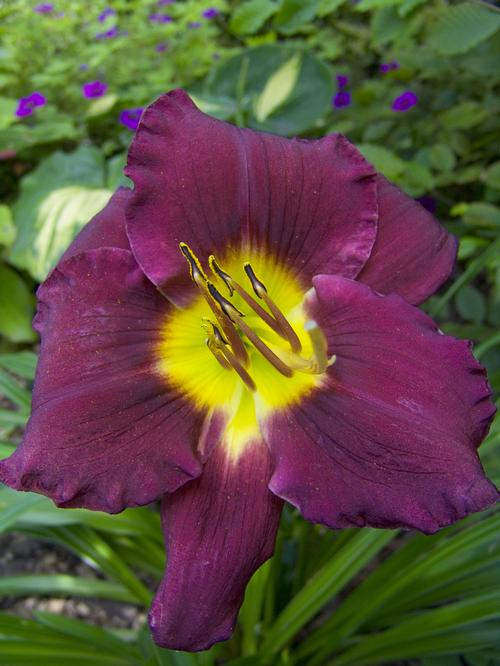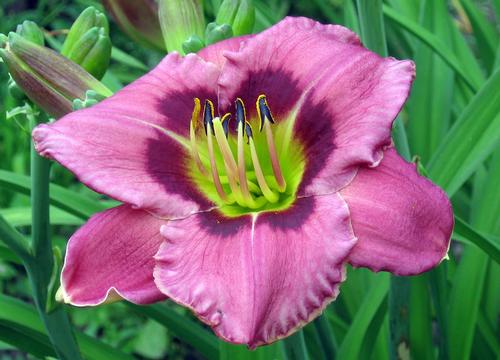Hemerocallis 'Always Afternoon'
Daylily
Early bloomer; large 5½" rosy-purple flowers with a dark plum-purple eye and green throat with nicely ruffled lighter pink edges. Strong tetraploid plants with heavy stems and attractive foliage all season; extended bloom and reblooms. Award Winner & Popularity Poll.
- · Large rosy-purple flowers, plum eye and green throat
- · Early summer blooms;re-bloomer
- · Award winner
Recommended Substitution

Hemerocallis 'Bela Lugosi'
Daylily
Mid-summer bloomer with large 6" very dark, deep purple with bright lime green throat. Strong tetraploid plants with sturdy stems, excellent branching with good bud count. Considered one of the best true purples with very sun fast color-Award Winner & Popularity Poll
Height:
22 in
Spread:
20-24 in
Zone:
3-9

Hemerocallis 'Always Afternoon'
Exposure
| • | Sun Tolerant |
| • | Morning Sun / Afternoon Shade |
Soil Moisture Needs
| • | Average Soil |
Nature Attraction
| • | Attracts Butterflies |
| • | Attracts Hummingbirds |
Attributes
| • | Fragrant |
| • | Re-Blooming |
| • | Good Container Plant |
| • | Good Cut Flower / Foliage |
Season of Interest (Flowering)
| • | Fall |
| • | Summer |

